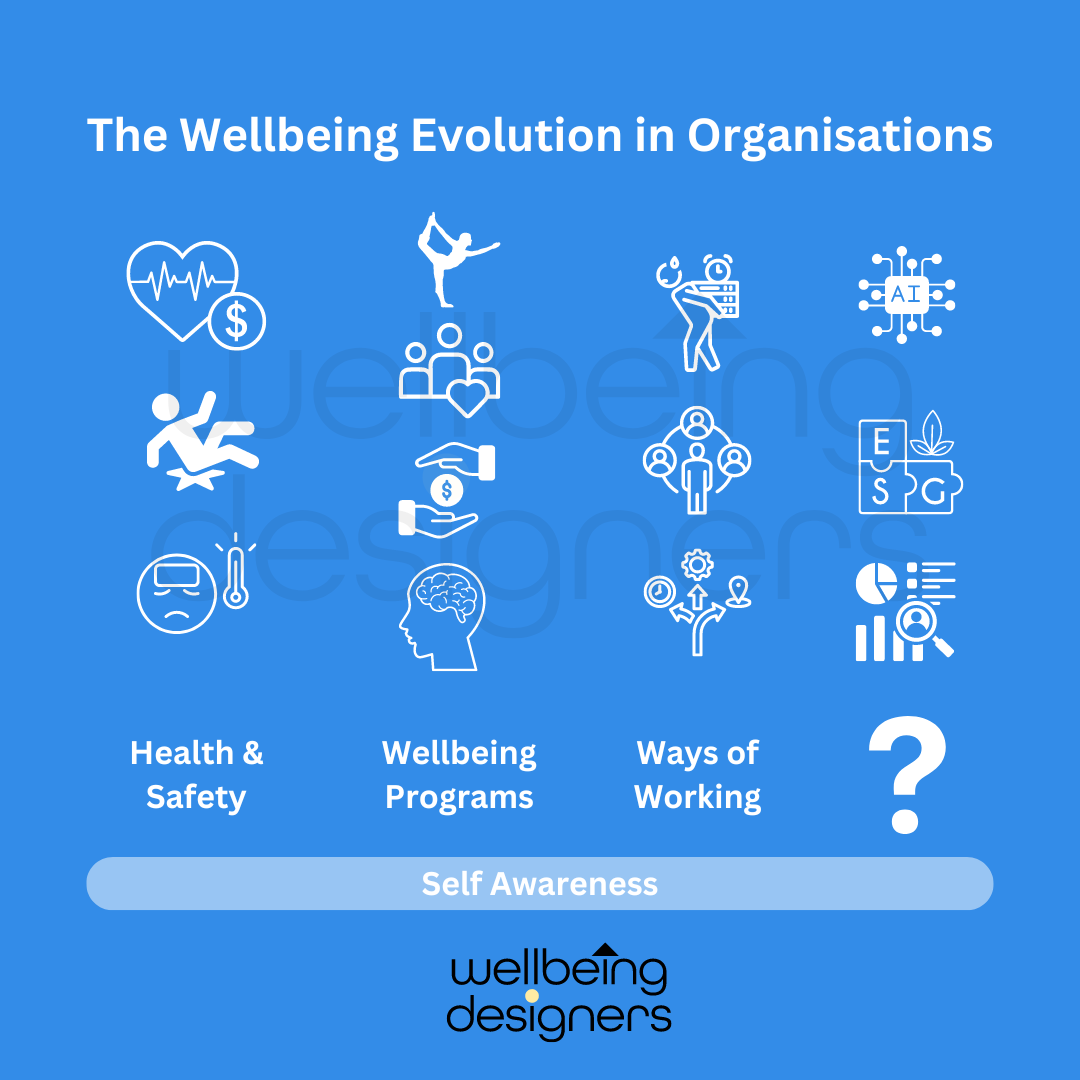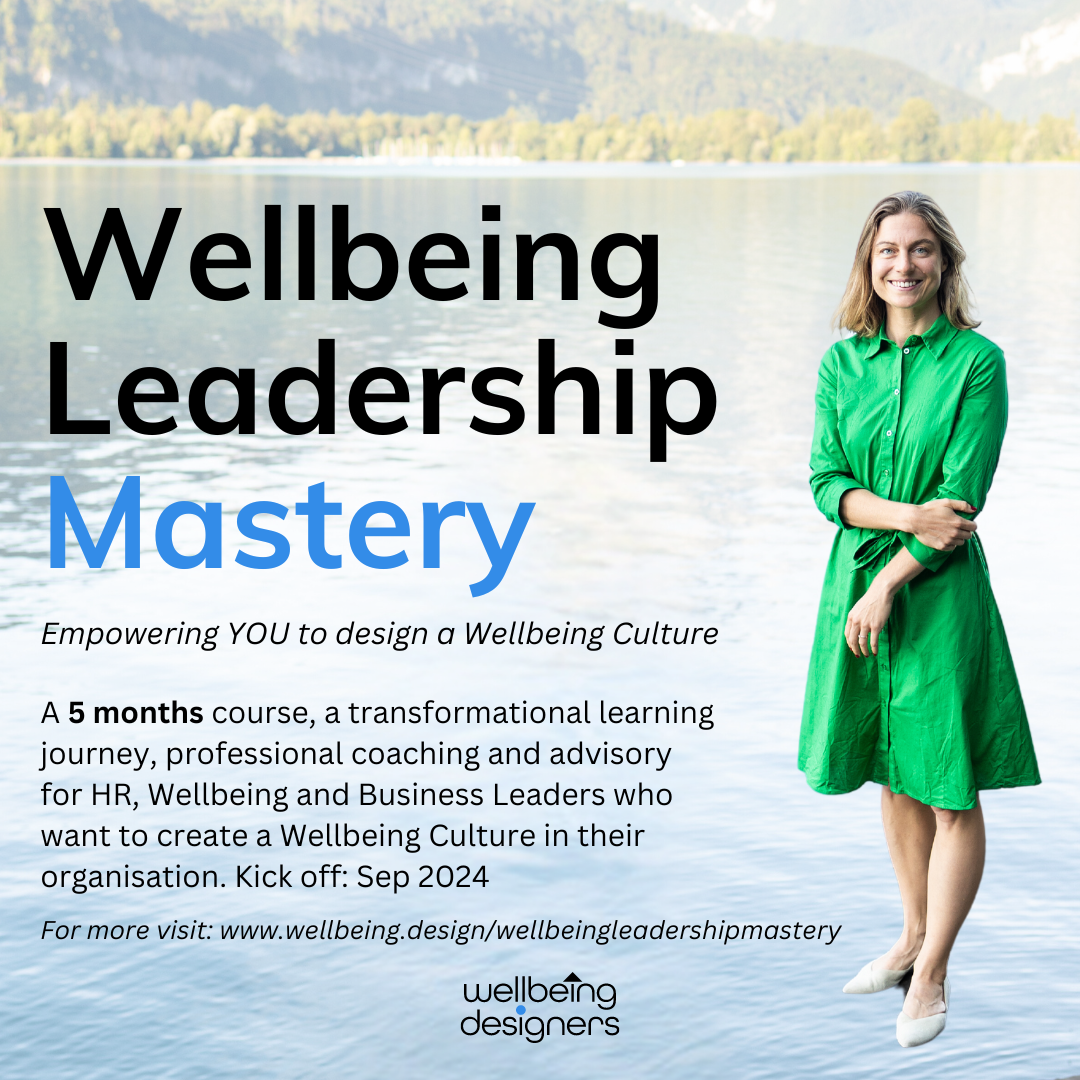- Aug 5, 2024
Amplifying Organizational Wellbeing: The Power of an Entrepreneurial Mindset and Communities
- Réka Deák
The wellbeing of employees has become a critical focus for organizations striving for sustainable success. As companies seek innovative ways to enhance their wellbeing initiatives, and they move from wellbeing programs towards integrating a wellbeing culture into the ways of working, the integration of an entrepreneurial mindset and the fostering of strong communities emerge as pivotal strategies. This article explores why these elements are essential in amplifying the wellbeing journey of organizations.

The Entrepreneurial Mindset: A Catalyst for Change
Entrepreneurs are known for their ability to think outside the box, challenge the status quo, and drive transformative change. This mindset is invaluable for organisations aiming to elevate their wellbeing programs. Here’s why:
Outside-In Perspective: Entrepreneurs often bring a fresh, external viewpoint that can uncover blind spots and identify new opportunities for improvement. This perspective is crucial for organisations that may be entrenched in traditional practices and need a shake-up to innovate their wellbeing strategies.
Daring to Change: Entrepreneurs are not afraid to disrupt old systems and introduce novel approaches. This courage to change is essential for organisations looking to break free from outdated wellbeing practices and adopt more effective, modern solutions.
Doing Things Differently: The entrepreneurial spirit thrives on doing things differently and better. By embracing this mindset, organisations can experiment with unconventional wellbeing initiatives that may yield higher engagement and better outcomes for their employees.
The Role of Employee Resource Groups (ERGs) and Communities
While an entrepreneurial mindset sets the stage for innovation, the role Employee Resource Groups (ERGs) and communities cannot be overstated in the wellbeing journey of organisations as also proven by this experiment published in Harvard Business Review earlier this year. These groups provide a supportive network that fosters a sense of belonging and collective growth. Here’s how they contribute:
Supportive Networks: ERGs and communities create a safe space for employees to share their experiences, challenges, and successes. This support system is vital for individual wellbeing and can help employees feel more connected and valued within the organisation.
Collective Voice: These groups amplify the voices of employees, ensuring that their needs and concerns are heard and addressed. This collective advocacy can drive more inclusive and effective wellbeing policies and programs.
Shared Learning and Growth: Communities facilitate the exchange of ideas and best practices, enabling employees to learn from each other and grow together. This shared learning environment can lead to the development of more holistic and impactful wellbeing initiatives.
Human is Helpful: Advocating for Support and Entrepreneurship
The essence of a thriving workplace lies in the principle that "Human is Helpful." This means fostering an environment where support is readily available, and asking for help is encouraged. Employee Assistance Programs (EAPs) play a crucial role here, providing professional support for personal and work-related issues, thereby enhancing overall wellbeing.
Moreover, advocating for gender equality and equal opportunities in all professional endeavors is essential. By inspiring an entrepreneurial spirit within the organization, companies can promote innovation while ensuring that everyone has the chance to contribute and succeed. This approach not only drives business success but also fosters a more inclusive and supportive workplace culture.
Give and Receive: The Reciprocity of Support
The concept of "Give and Receive" (coined also by Adam Grant in his book Give and Take) is fundamental in building a supportive professional community. Encouraging employees to support one another and to seek help when needed creates a culture of mutual respect and collaboration. This reciprocity strengthens the community and enhances the overall wellbeing of the organisation.
Conclusion
The integration of an entrepreneurial mindset and the nurturing of strong communities are key to amplifying the wellbeing journey of organisations. Entrepreneurs bring the necessary innovation and courage to challenge the status quo, while ERGs and communities provide the support and collective strength needed to sustain these changes.
This is why I created the Wellbeing Leadership Mastery learning journey—to support wellbeing leaders within organisations by building a supportive professional community. This 5 months long course aims to support HR, Wellbeing and Business leaders find their voice and bring new perspectives into their work, ultimately driving more effective and sustainable wellbeing initiatives to build a Wellbeing Culture in their organisation.
For more visit our Wellbeing Designers website or get in touch with me.

About our Thought Provoker: "Change yourself to change the world." Réka Deák embodies this philosophy as a systemic change facilitator. She founded Wellbeing Designers to enable leaders and organizations create a Wellbeing Culture through strategic wellbeing education. She is a leadership advisor, organizational consultant, brain-based coach, yoga and meditation teacher, and international keynote speaker and podcaster. She uses innovative and holistic approaches to achieve sustainable performance, engagement, and resilience. Her work spans diverse industries across Europe, the UK, the US, and the Middle East. Réka values self-leadership, a growth mindset, and the power of nature.
To truly enhance organizational wellbeing, adopting an entrepreneurial mindset can be transformative. Building supportive communities within the workplace is crucial. For more insights, read our blog on The Power of Employee Resource Groups (ERGs): Advocating Support, Gender Equality, and Equal Opportunities.
Read more blogs:
How to have difficult conversations with your team
Burnout – Why A Toxic Workplace Is Only Half Of The Equation
Menopause At Work – Let’s Finally Talk About It!
How To Avoid Pitfalls Of Diversity, Equity, Inclusion (DEI) Training
